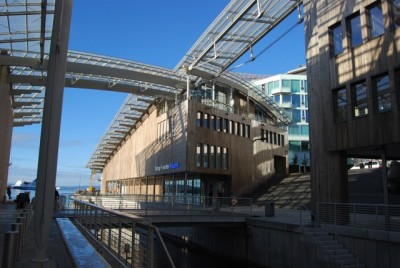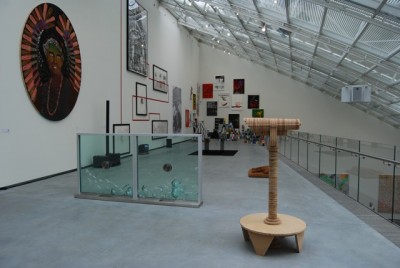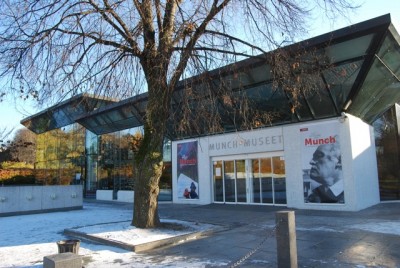Norwegian art museums are attracting more financial aid from private sponsors including oil companies, which currently are fueling three major exhibits in Oslo. The museums welcome and need the mostly low-profile support of sponsors, but it’s lately set off some debate as well.

Oslo’s new Astrup Fearnley Museum was an instant hit when it opened in late September. Around 25,000 people visited during its first two weeks and attendance “exceeded all our expectations,” director Gunnar B Kvaran told newspaper Dagens Næringsliv (DN) last month. “It’s fantastic for us to experience such great interest.”
It wasn’t so fantastic to suddenly receive criticism over the choice of one of the museum’s sponsors, petroleum company Lundin Norge. It made one of the biggest oil discoveries ever in the North Sea, the Johan Sverdrup field, which is believed to contain between 1.7-3.3 billion barrels of oil, and it’s an active player in the Norwegian offshore industry.
Its Swedish parent, however, is under investigation in Sweden in connection with its role in the war involving oil fields in Sudan from 1997 to 2003. Lundin has been accused of war crimes and violating a ban on weapon trade in Somalia. That, reports Norwegian Broadcasting (NRK), has led critics to blast Astrup Fearnley for choosing Lundin as a main sponsor that provides around NOK 1 million a year year in support. Other sponsors include law firm BA-HR and Petter Stordalen’s new neighbouring hotel at Tjuvholmen.

Kvaran told newspaper Aftenposten that Astrup Fearnley is aware of the “serious charges” directed at Lundin, but there’s been no indictment, nor has Lundin been convicted of any wrongdoing. Kvaran said Astrup Fearnley works from the premise that Lundin operates legally and that the museum deals with the Lundin executives in Norway, at Lundin Norge, not those in Sweden.
Torstein Sanness, chief executive of Lundin Norge, told DN that Lundin had looked for sponsor candidates “and the choice fell on the Astrup Fearnley Museum.” Sanness called it “a risky sport” to invest in modern art, “so the museum has some things in common with our operations.”
Lundin’s own offices are close to the museum “and it can be a place where our employees can come and get an understanding for modern art,” Sanness added. “We will also use the museum actively for meetings and receptions.”

Meanwhile, two other foreign-owned oil companies doing business in Norway are also involved in sponsoring art in Oslo. Wintershall, the large German oil and gas unit of BASF that recently entered a billion-kroner deal with Statoil for operations in the North Sea, is behind Norway’s first major exhibition of German artist Emil Nolde at the National Gallery, while Idemitsu of Japan continues to be a strong supporter of the beleaguered Munch Museum in Oslo.
Wintershall gets a small mention on promotions for the Nolde exhibition, which was formally opened by Foreign Minister Espen Barth Eide last month, but curiously wasn’t mentioned at all in a full-page spread newspaper Aftenposten ran on the exhibition when it debuted in mid-October. Aftenposten wrote that the exhibit was “made possible” by the National Gallery’s loan of around 100 paintings, graphic, water colours and drawings from the Nolde Foundation in Seebüll. Absent was any information on the financing needed to mount the major exhibition of an artist said to have taken up the expressionist heritage of Paul Gauguin and Edvard Munch.
“We’re happy to be able to support this here in Norway,” said Martin Bachmann, board member of Winterhall and responsible for exploration and production. He claimed that Winterhall’s involvement in the exhibition, which runs through January 20, was “in many ways a ‘thank you’ to the residents of Norway” after Wintershall has become one of the largest holder of licenses on the Norwegian continental shelf after less than 10 years of operations in Norway. He linked that to “the open and friendly attitudes that have met us here.”
On the other side of Oslo, at Tøyen on the east side, the struggling Munch Museum has relied on support from Japanese investors for years, since the city of Oslo has consistently failed to provide enough financial support needed to expansively care for its Munch legacy. Edvard Munch himself left his own vast, personal collection of works to the city in his will.
The Japanese came forward with millions in aid already in the 1980s, and now Japanese oil company Idemitsu is carrying on the support. In recent years it has, for example, agreed to finance maintenance of Munch’s art to enable its move to a new museum one day, once city politicians stop quarreling on where it should be located. Idemitsu Petroleum Norge is currently sponsoring the Oslo version of the highly acclaimed “Modern Eye” exhibition that opened at the Munch Museum last week.
There has been little if any reaction to the sponsorships of oil companies Wintershall and Idemitsu, unlike that which met Lundin’s effort to support Astrup Fearnley. Sponsors in general get far less recognition in Norway than they do in other countries like the US. There seems to be a feeling that the public sector should be the main supporter of culture in Norway, financed through the tax base, while private support is secondary.
The problem, however, arises, as in the case of the Munch Museum, when the politicians fail to provide the public support needed, even in a country made wealthy by the oil industry itself. Astrup Fearnley is owned by a private foundation largely funded by descendants of the Astrup and Fearnley families.
Views and News from Norway/Nina Berglund
Please support our news service. Readers in Norway can use our donor account. Our international readers can click on our “Donate” button:

